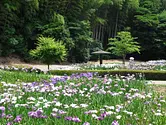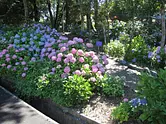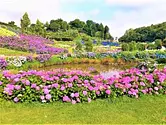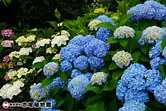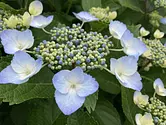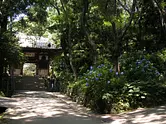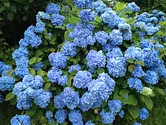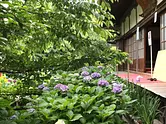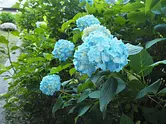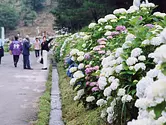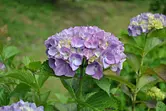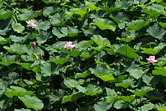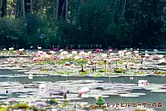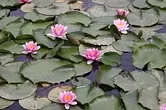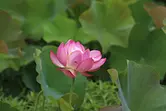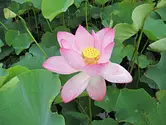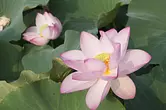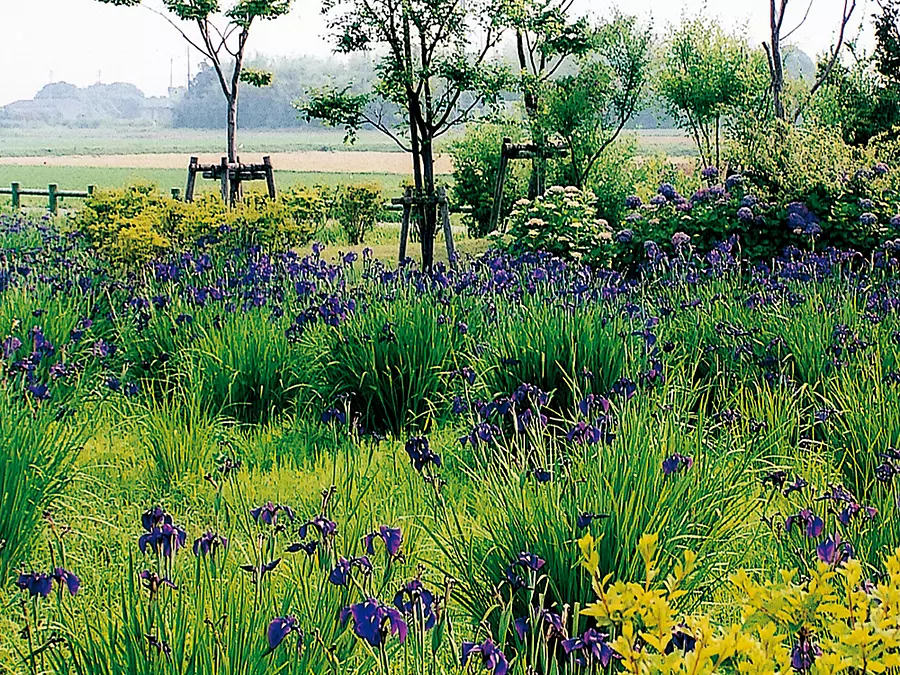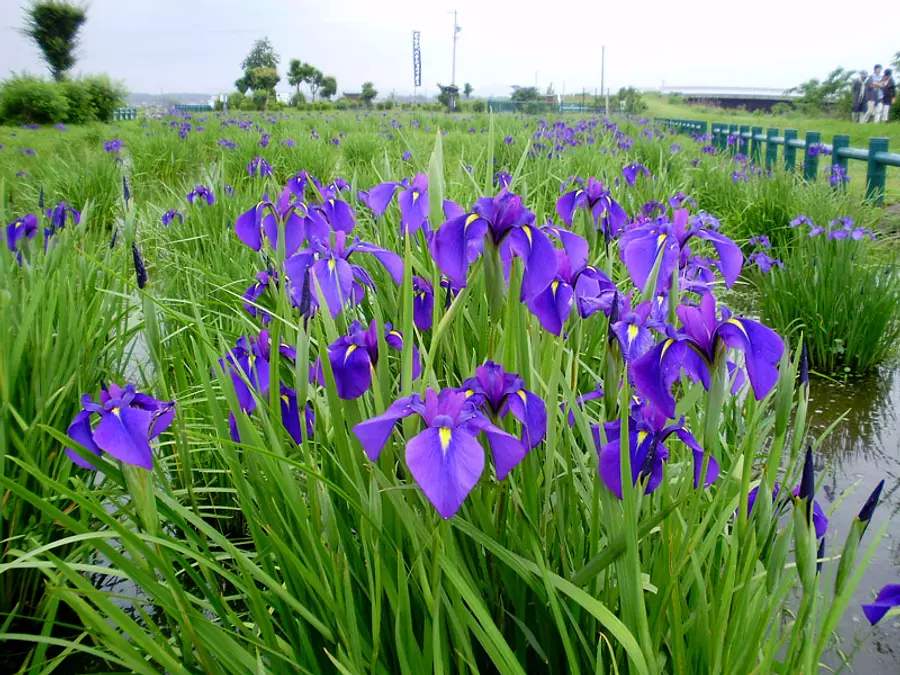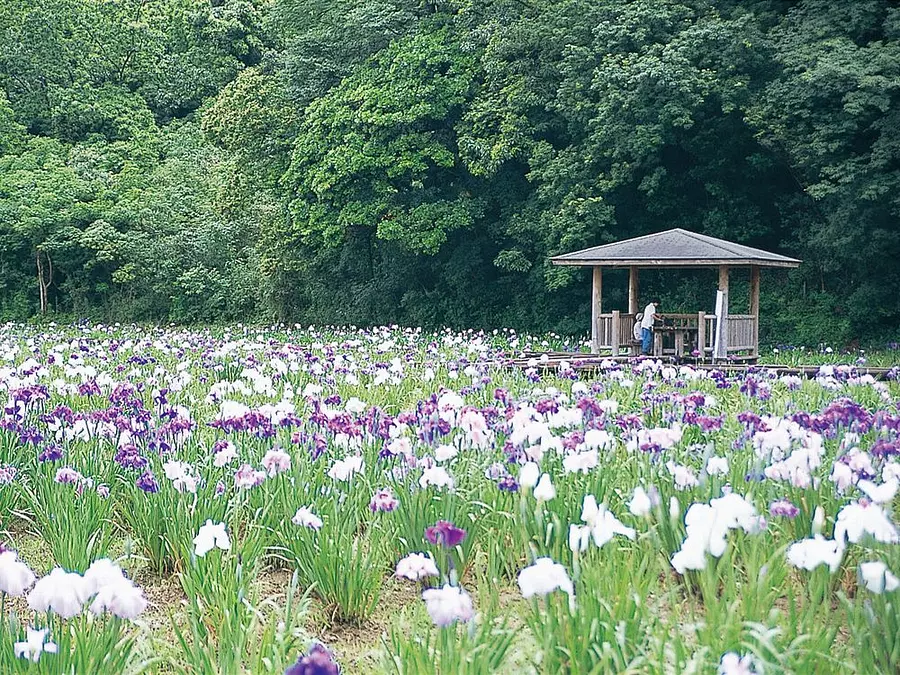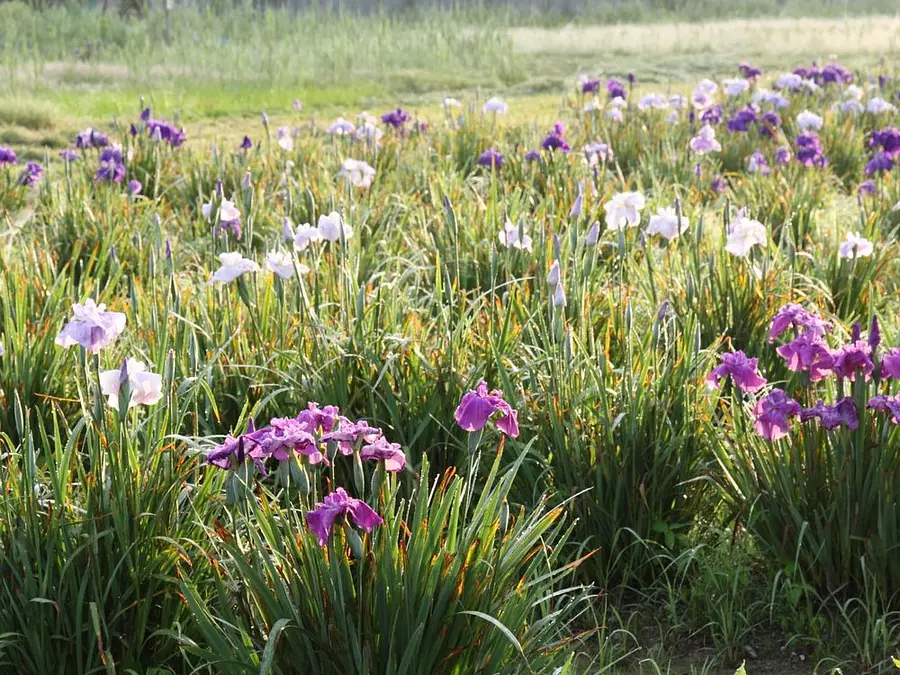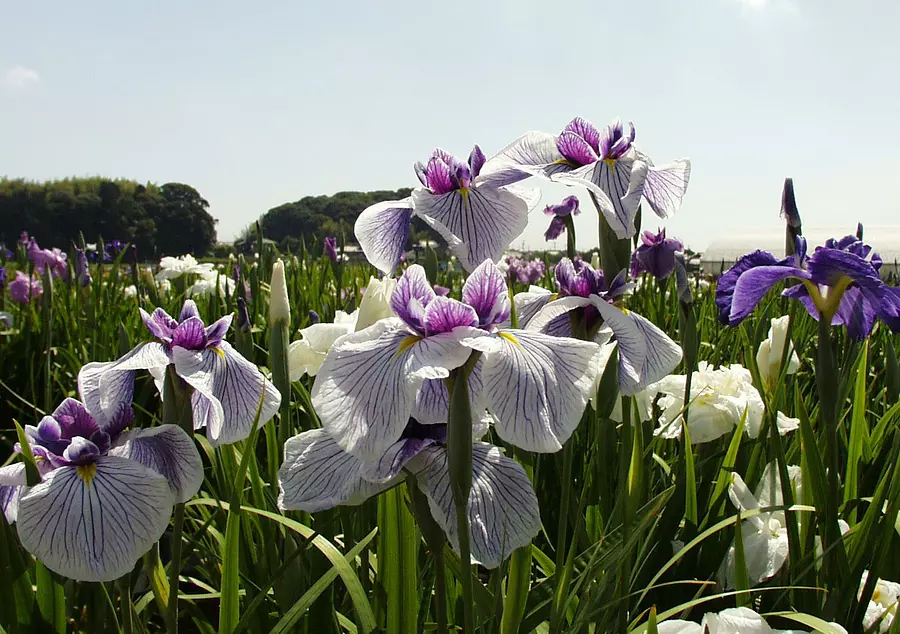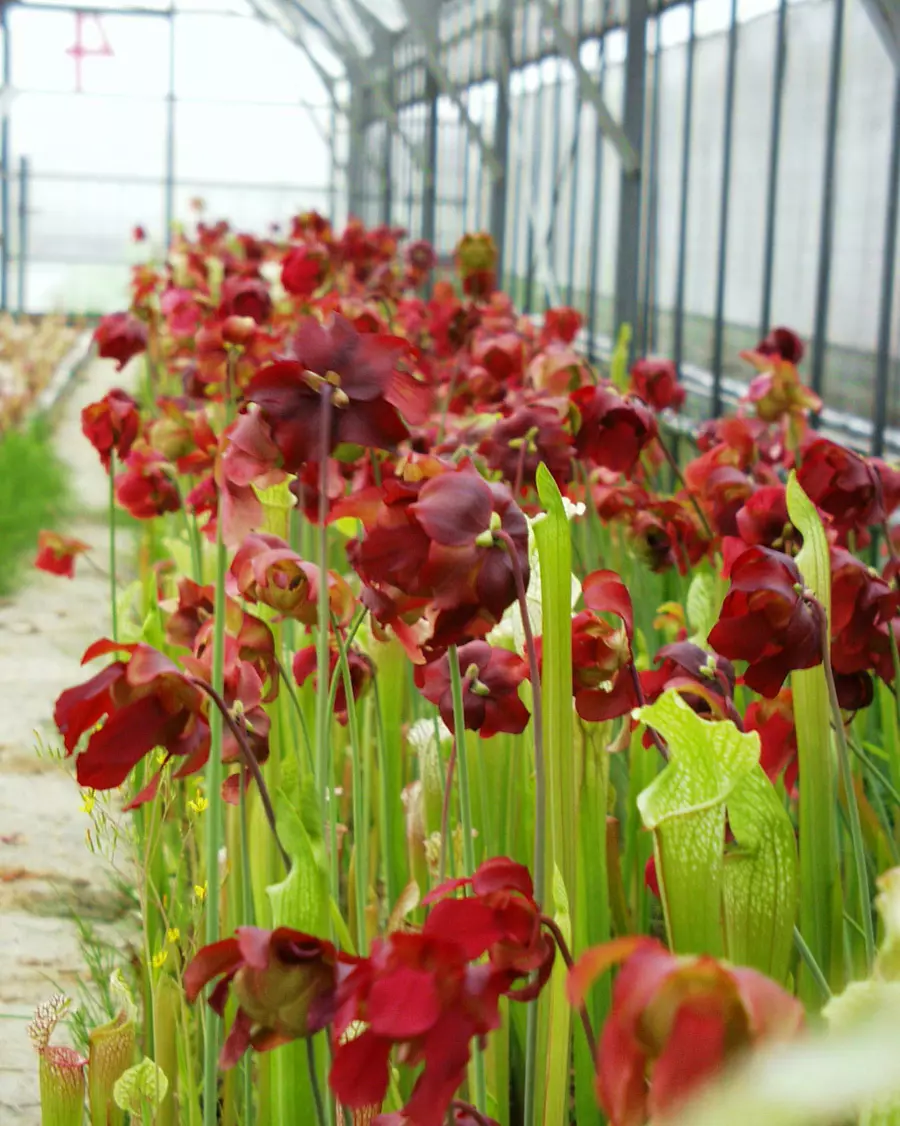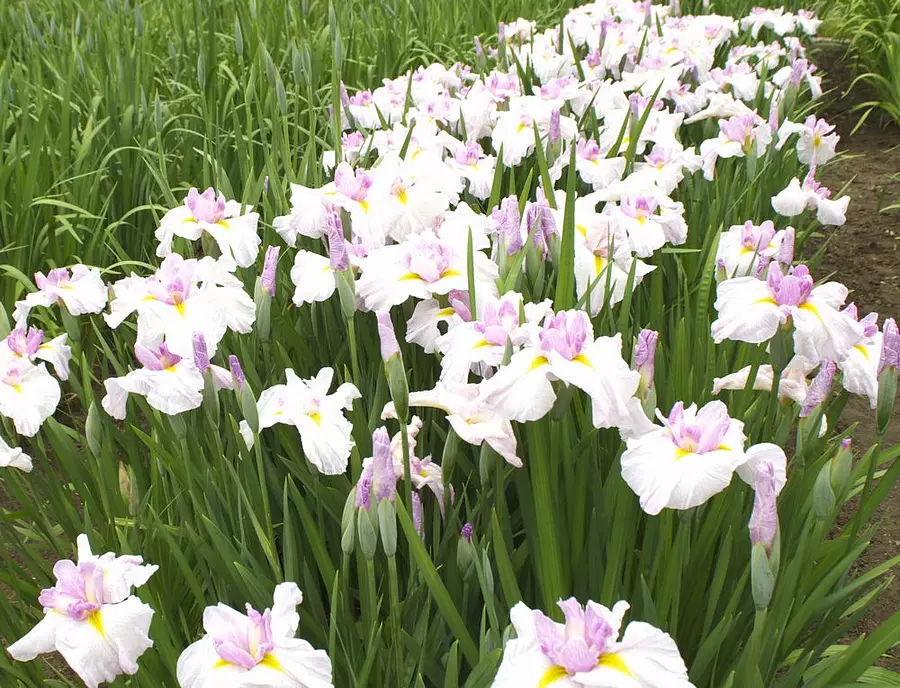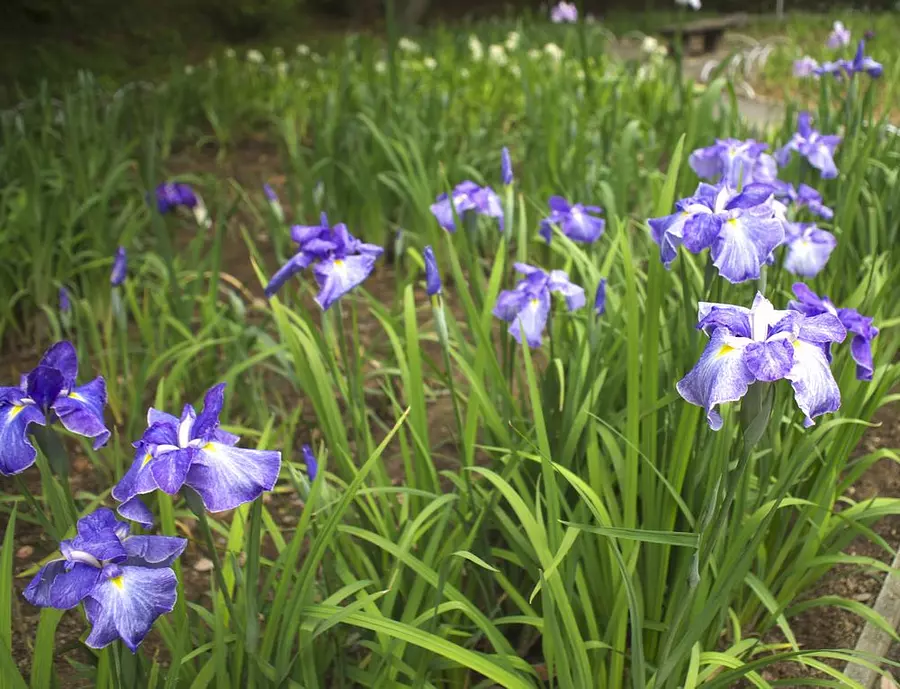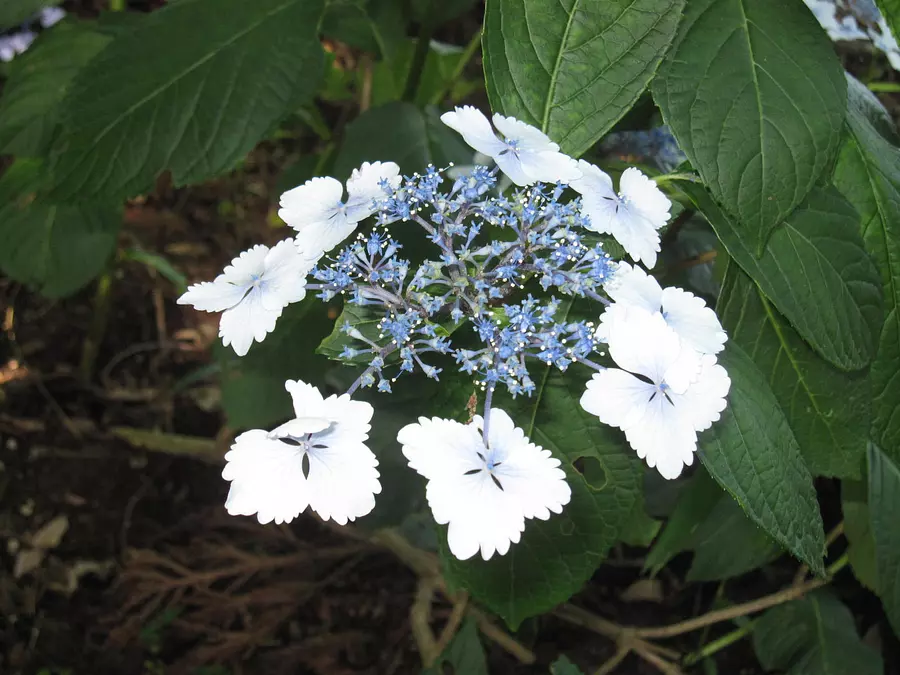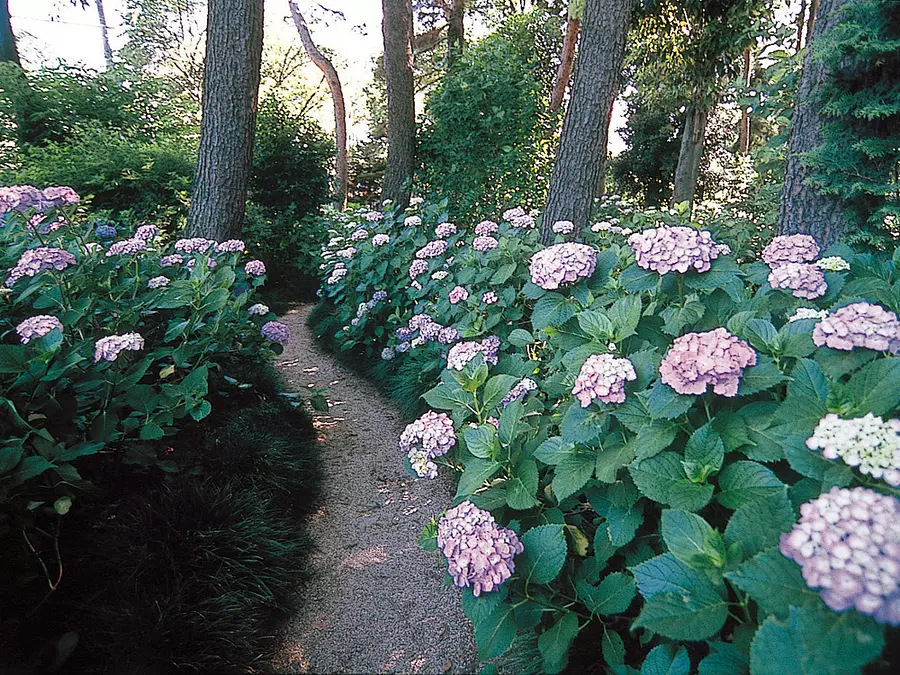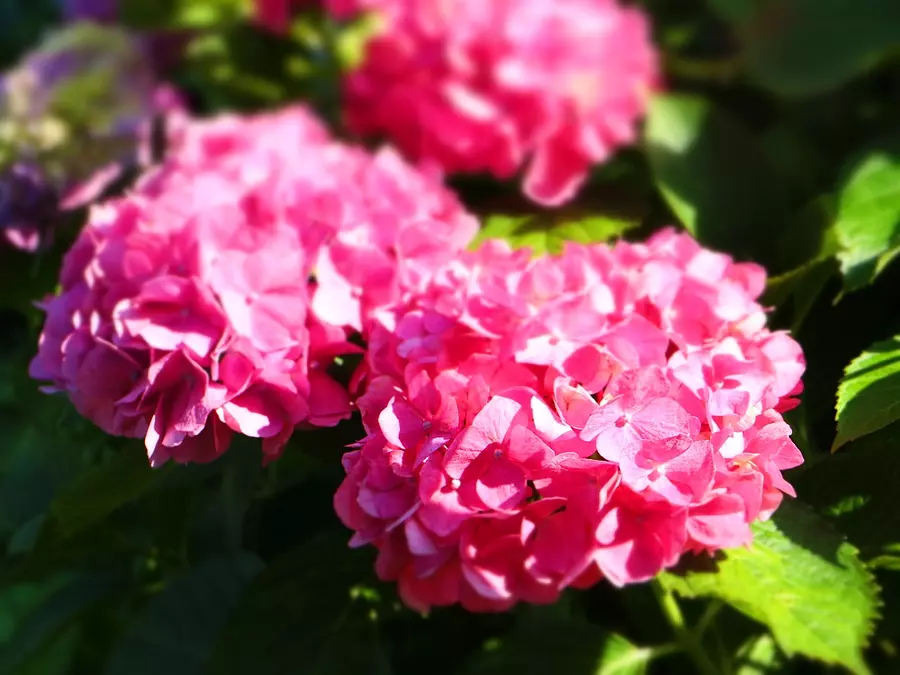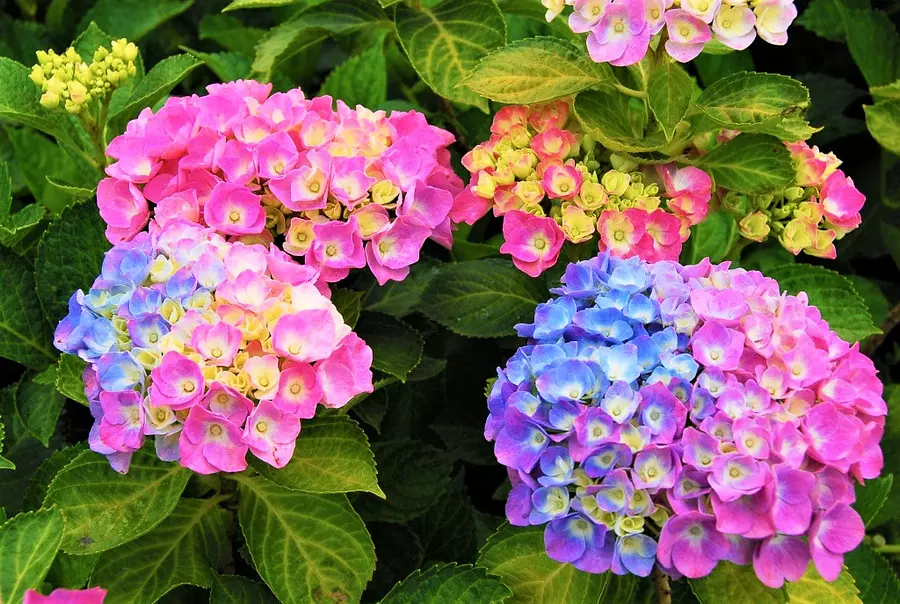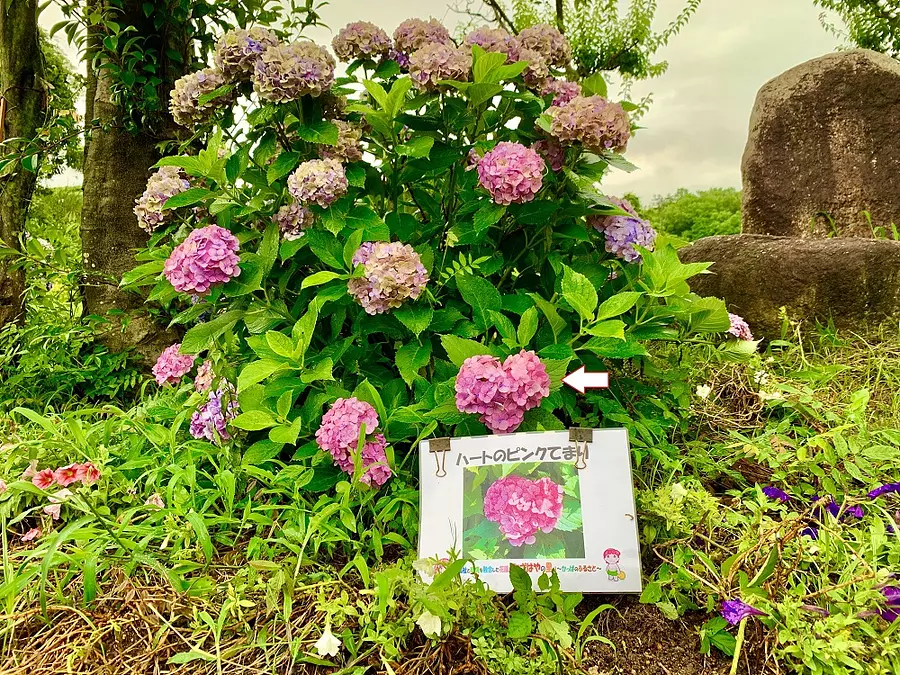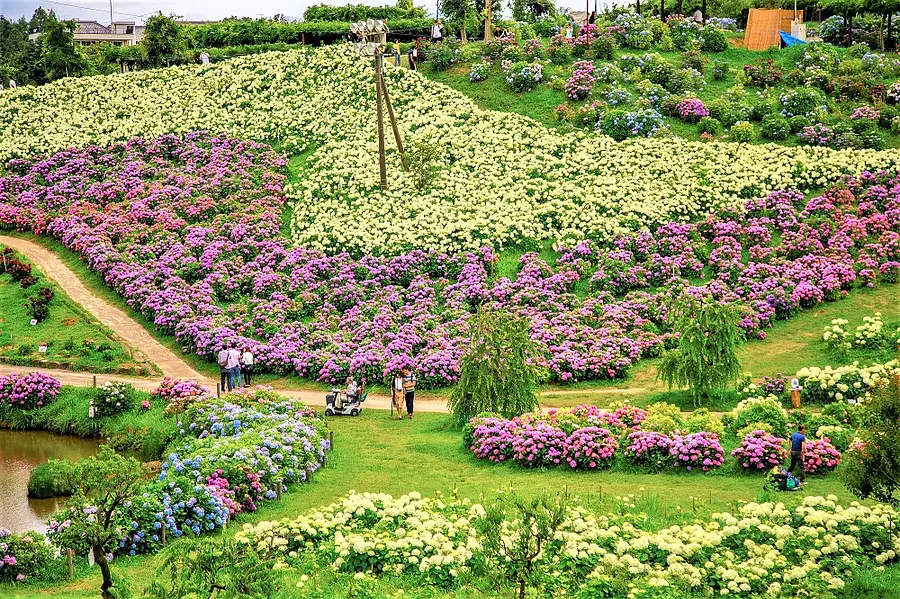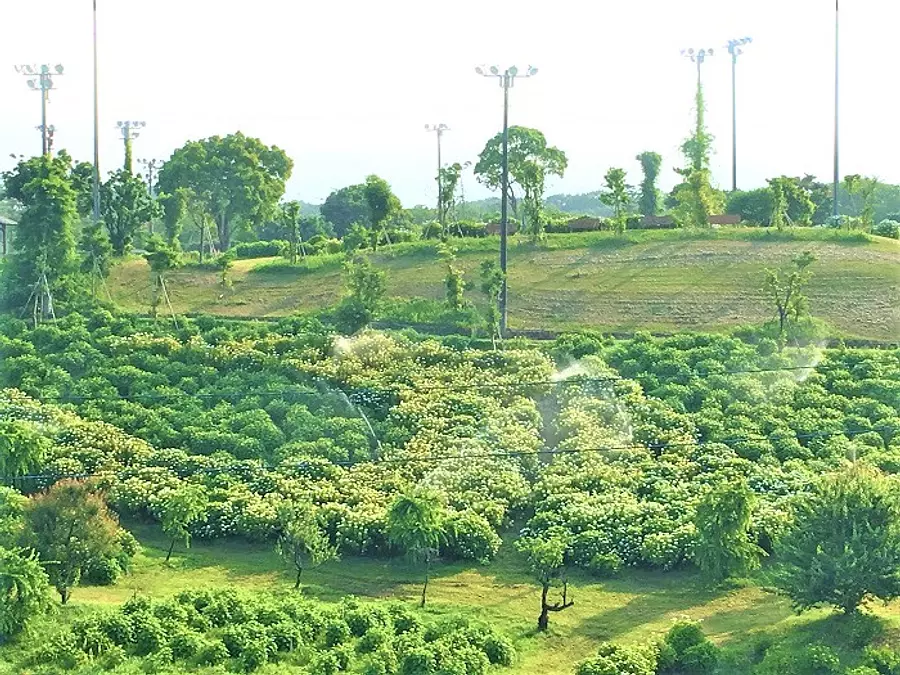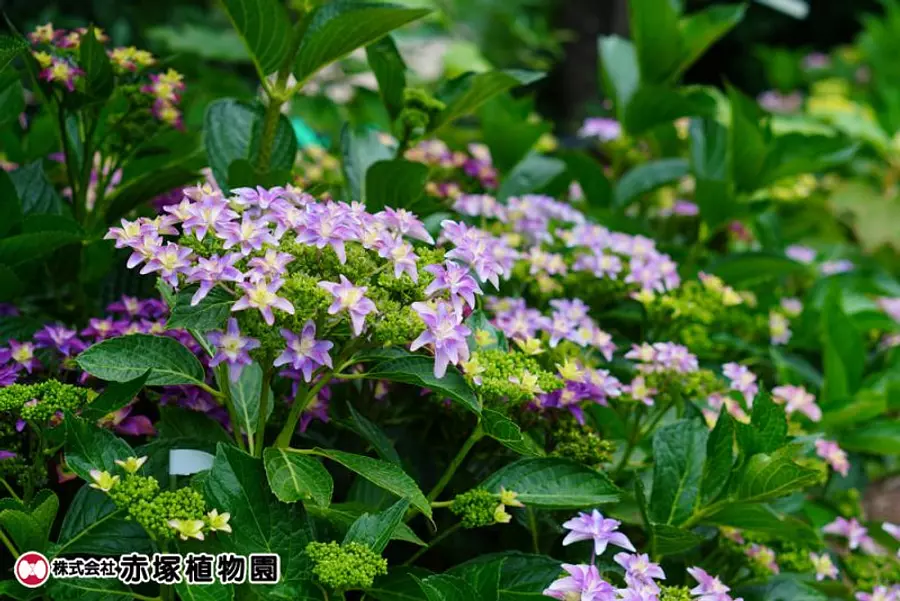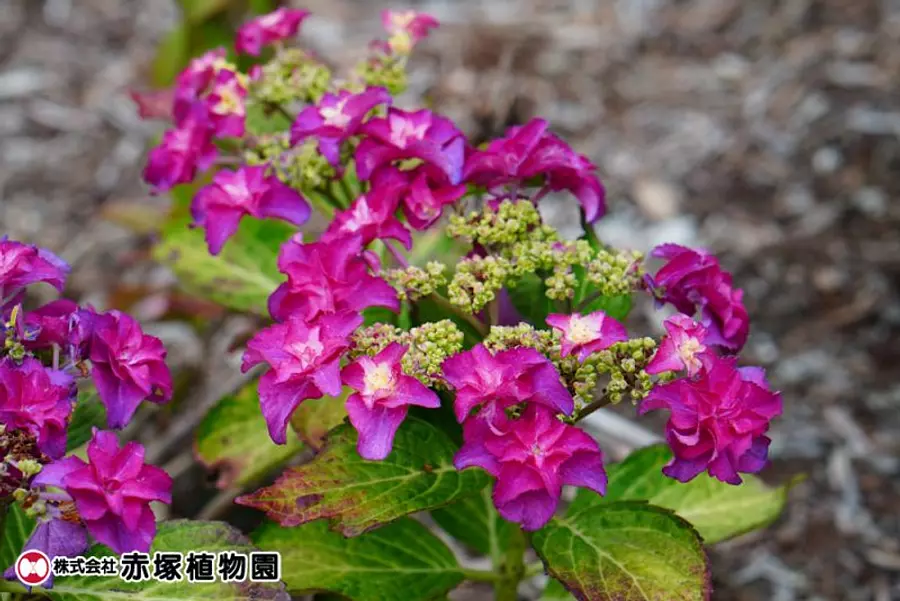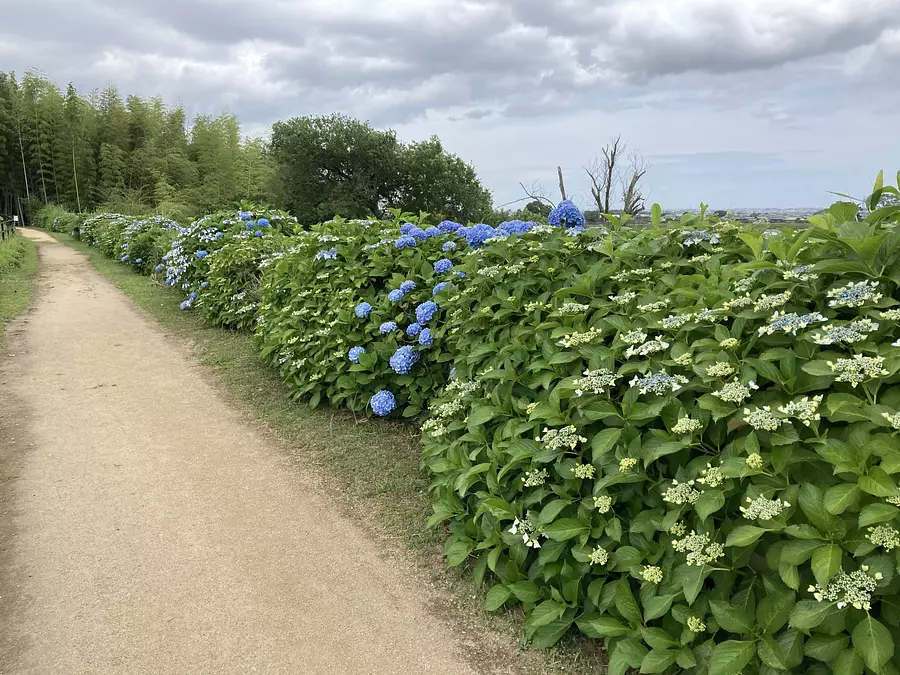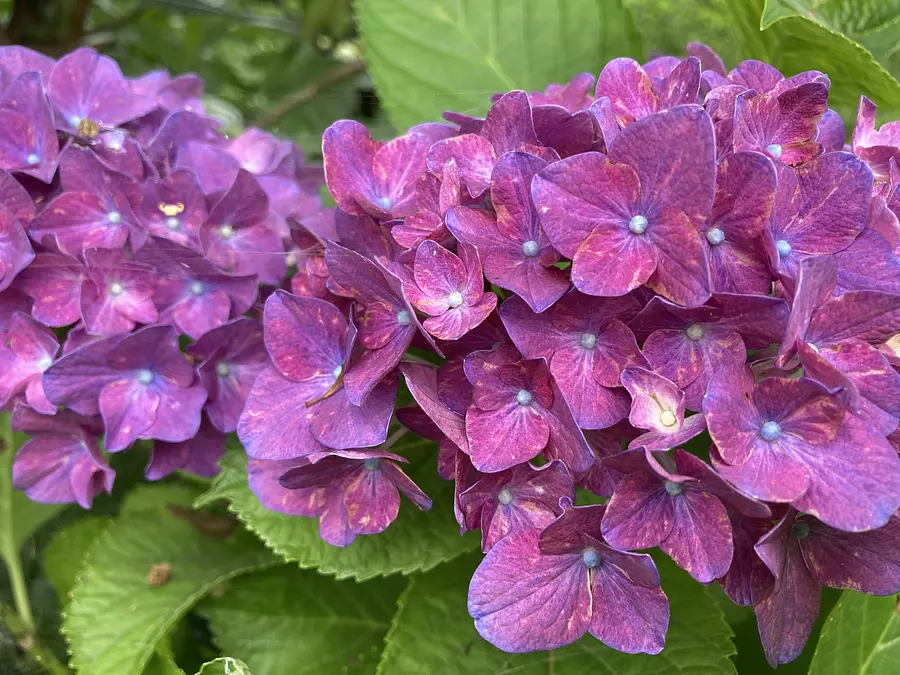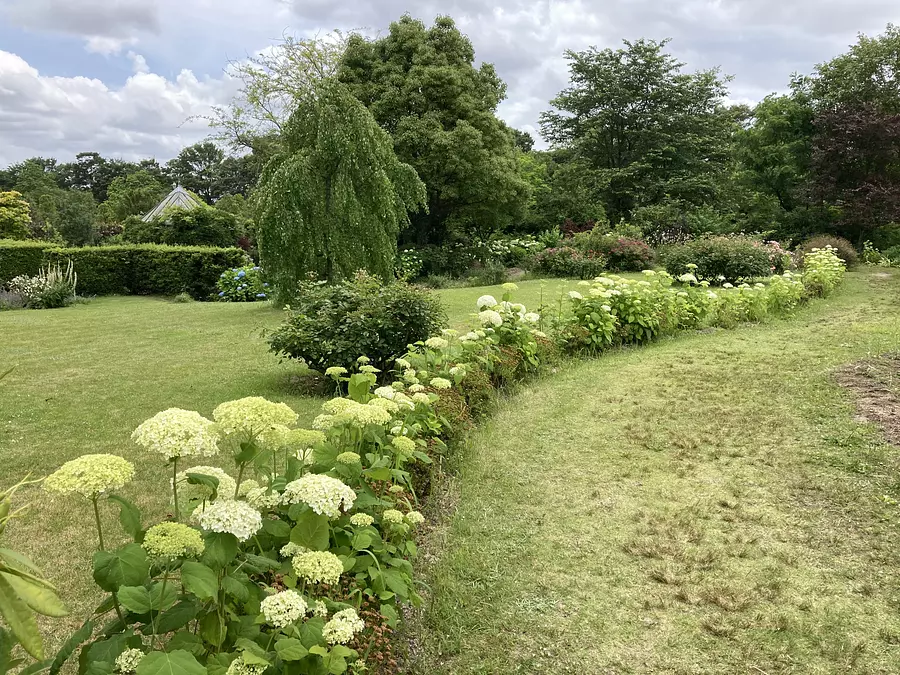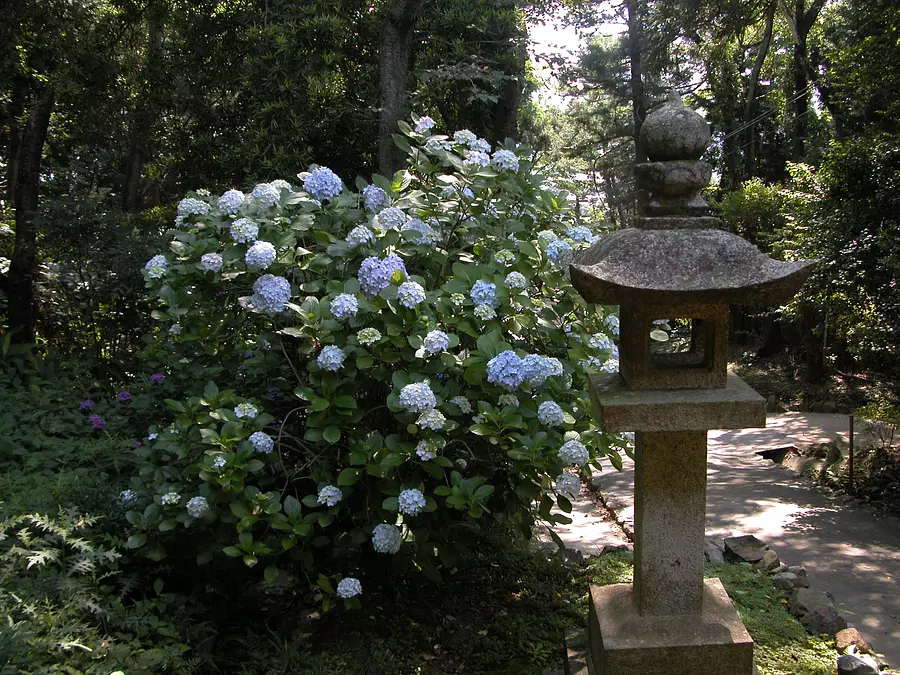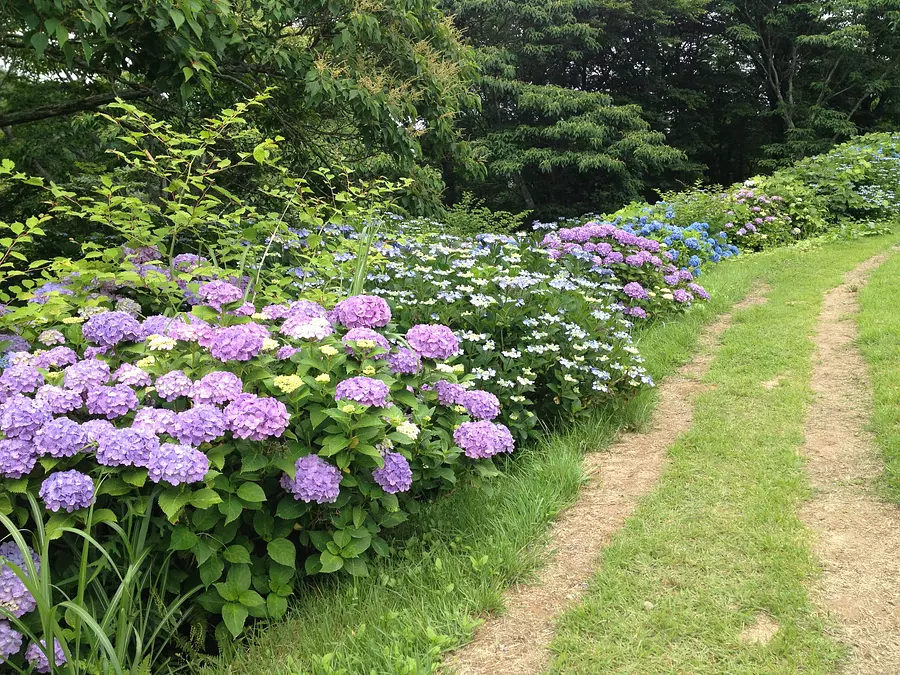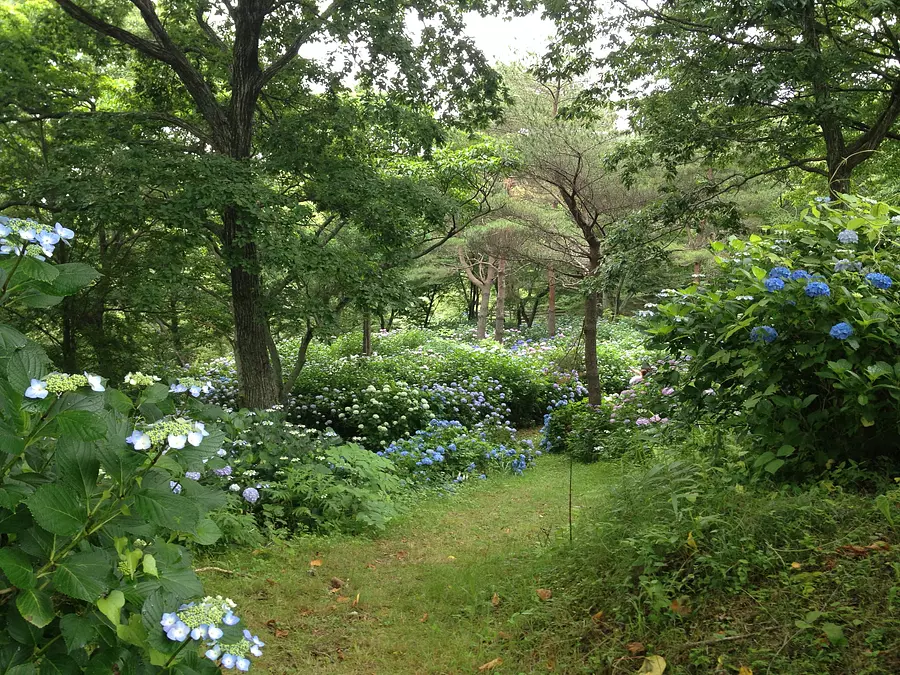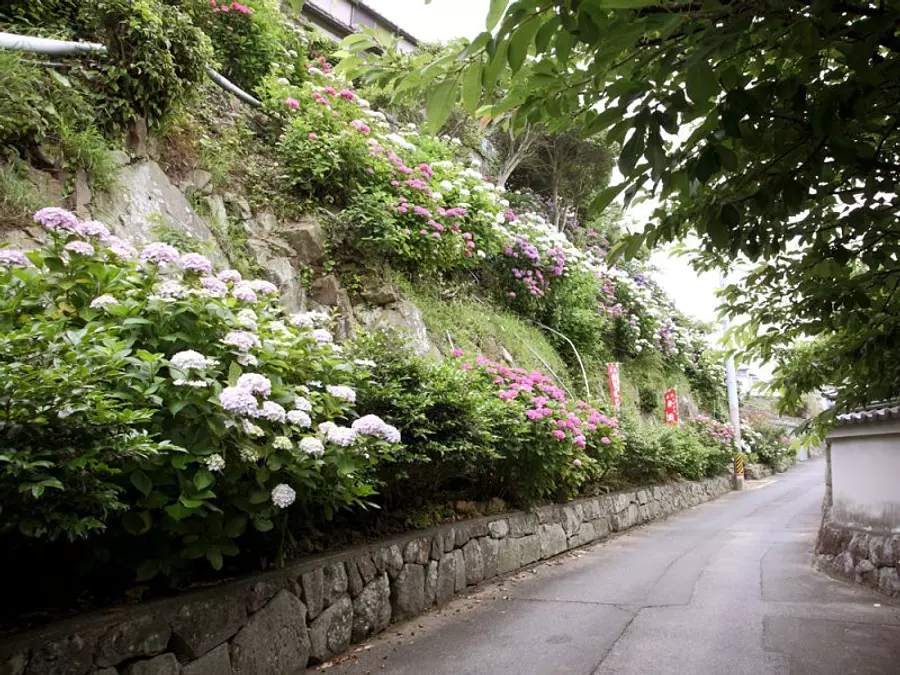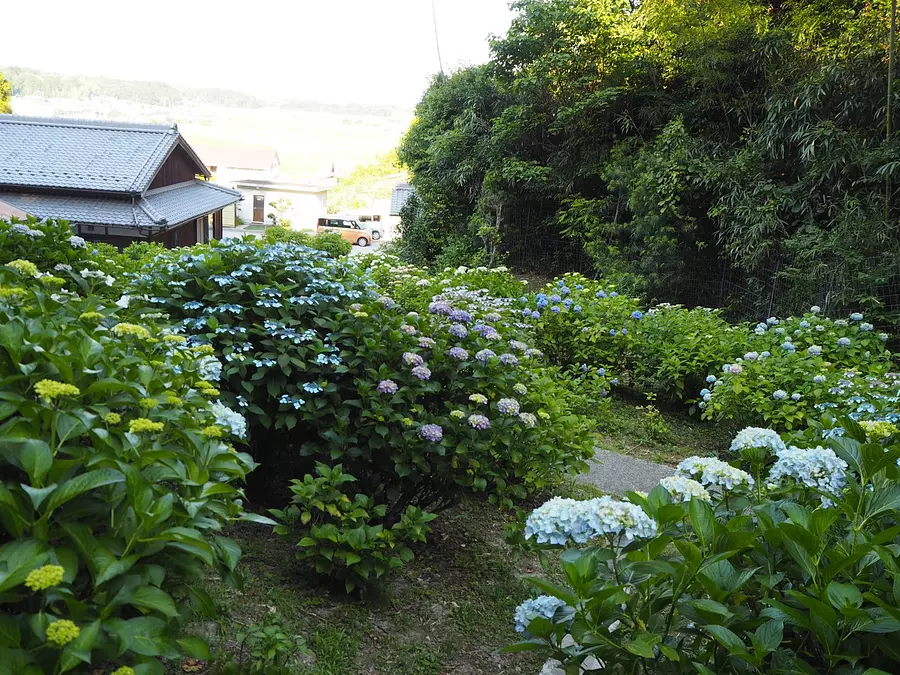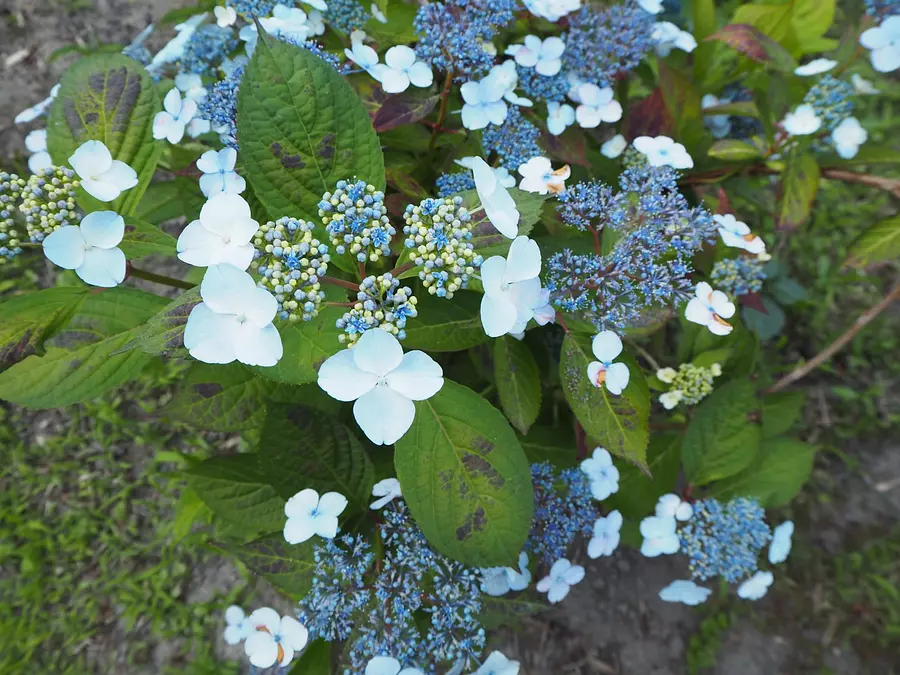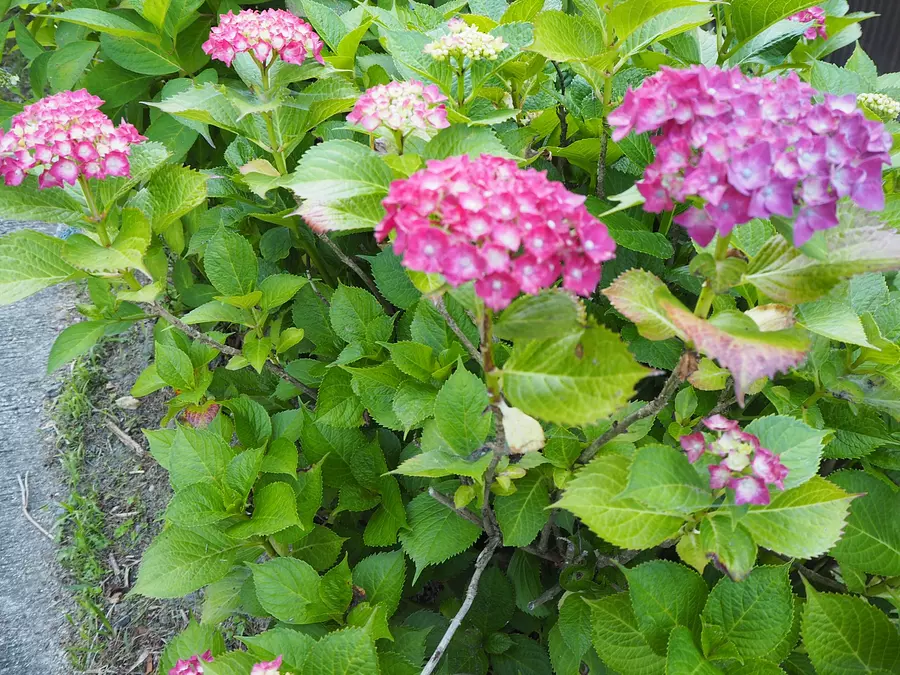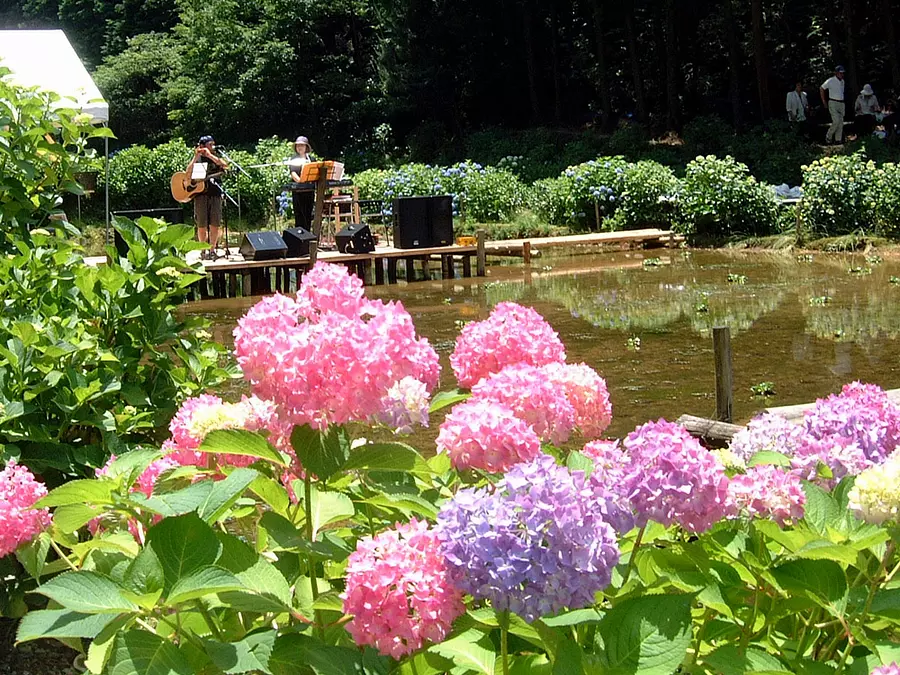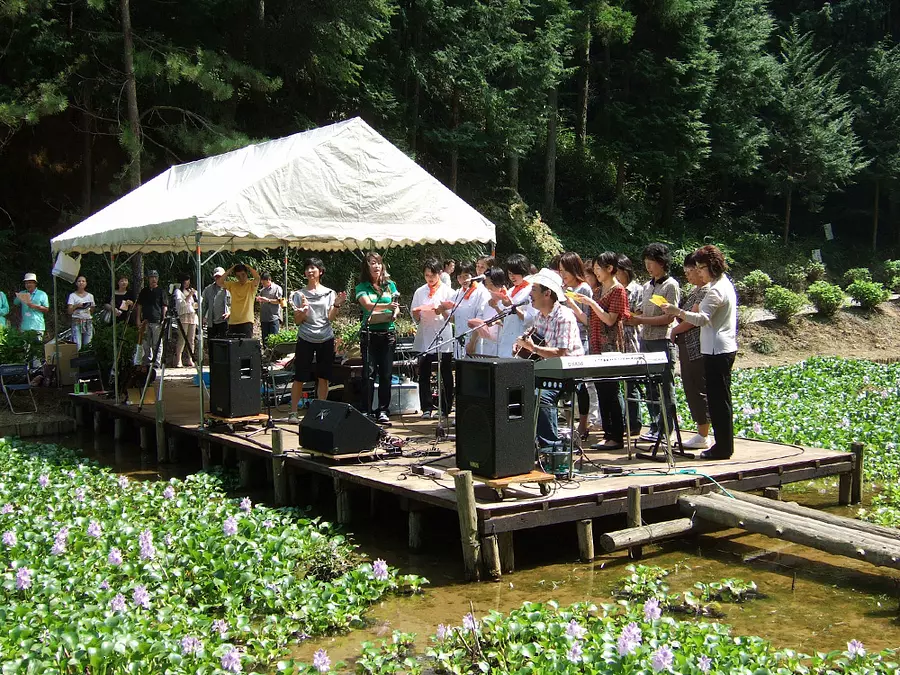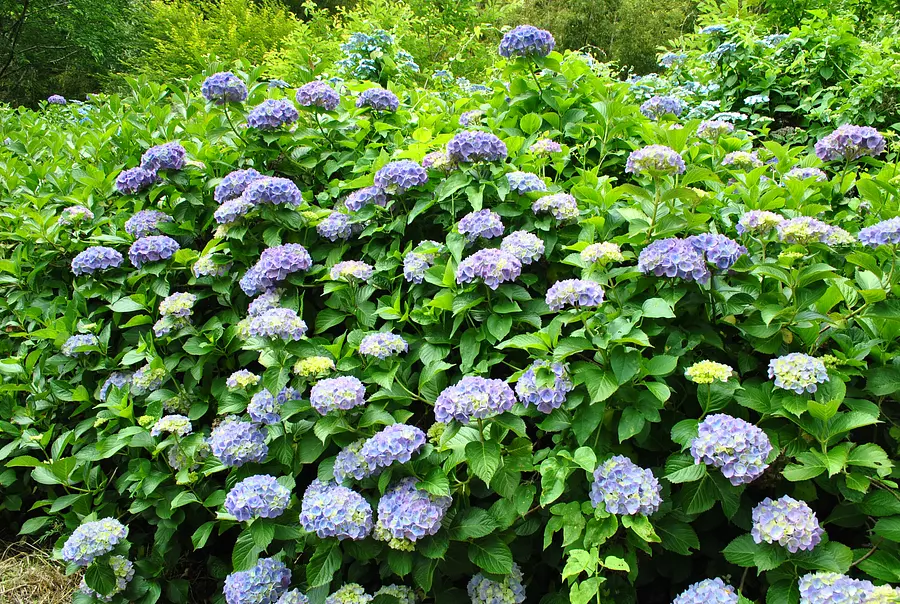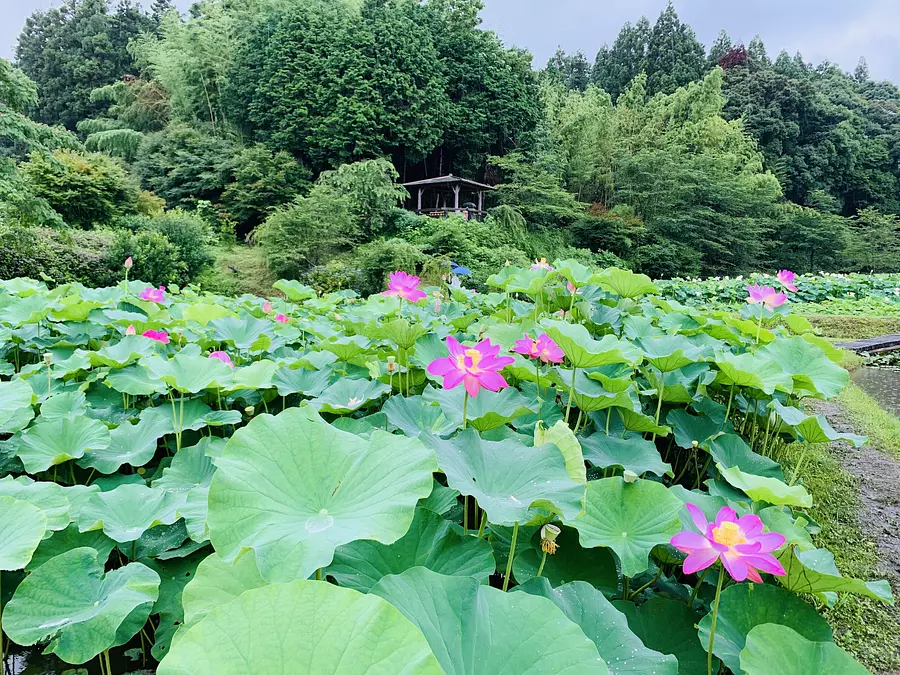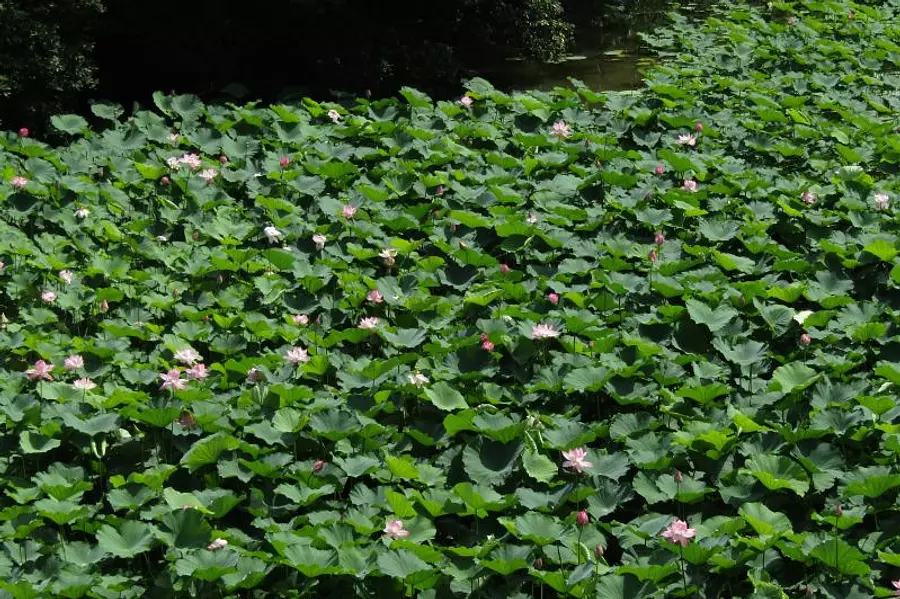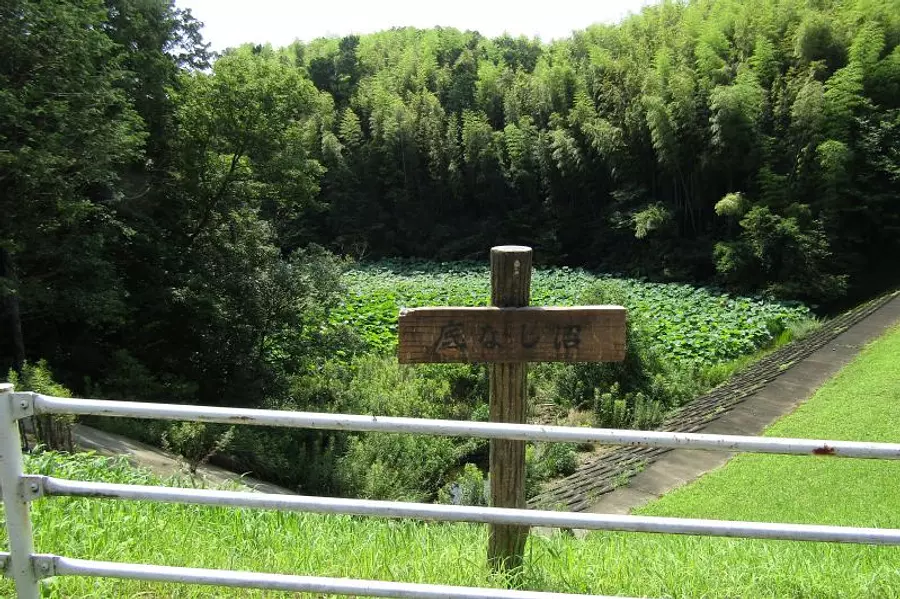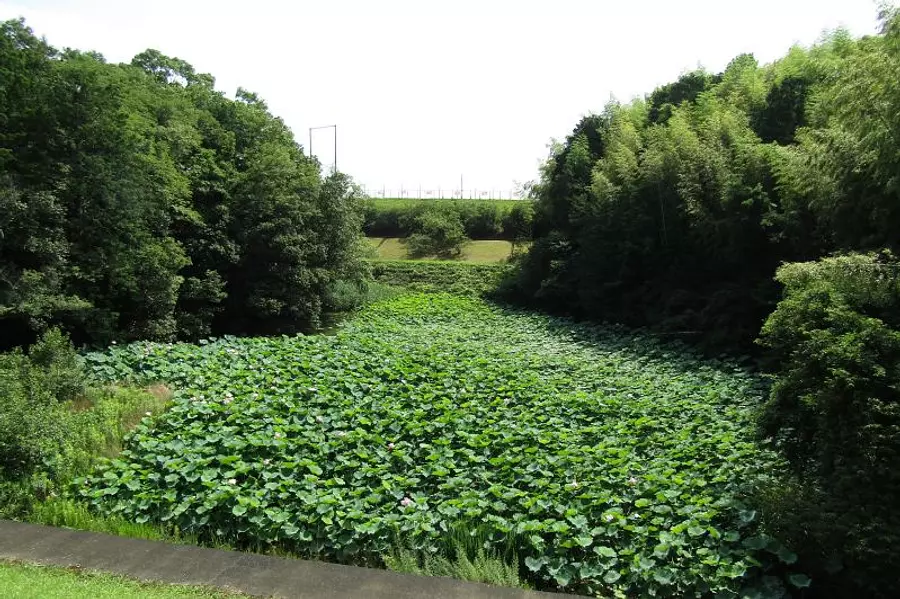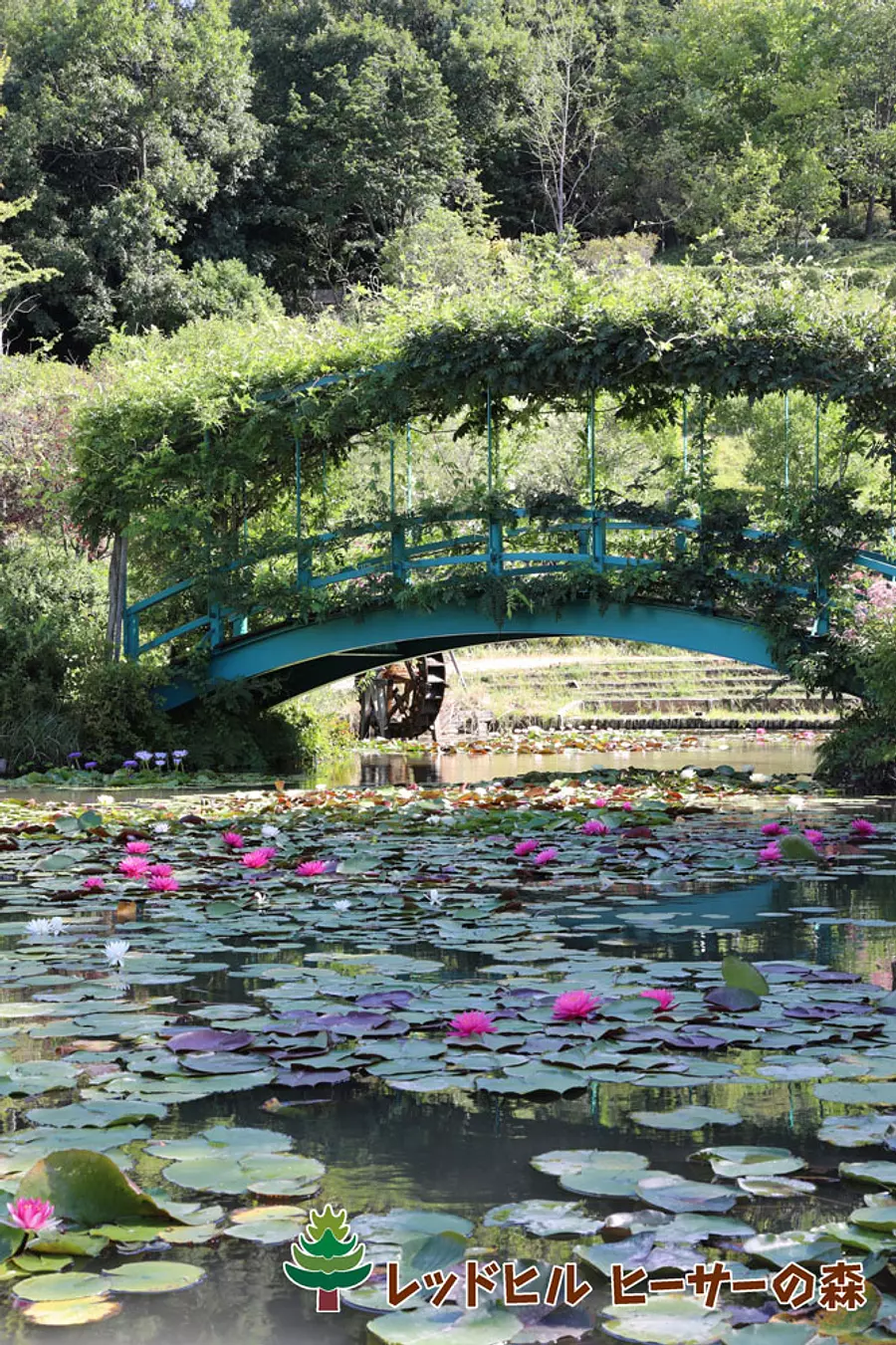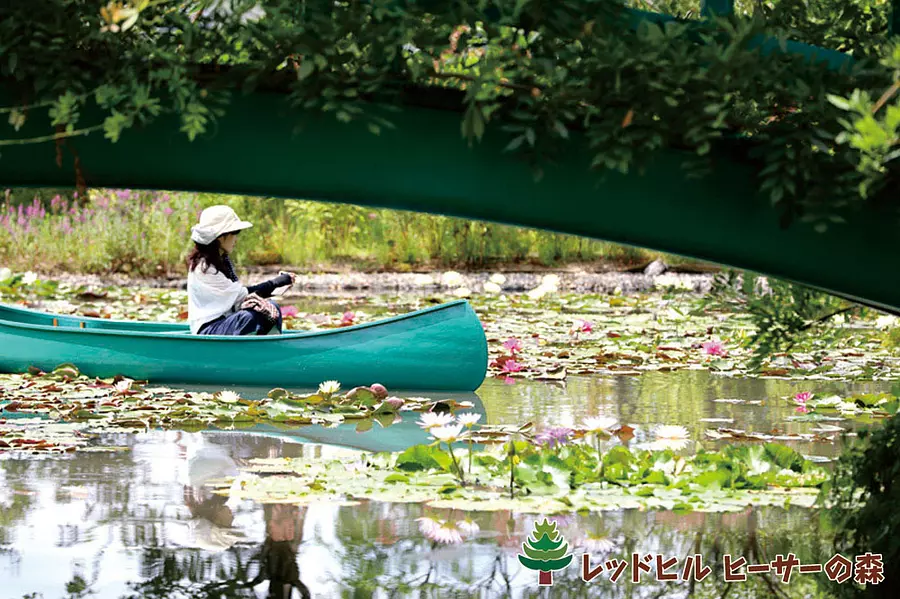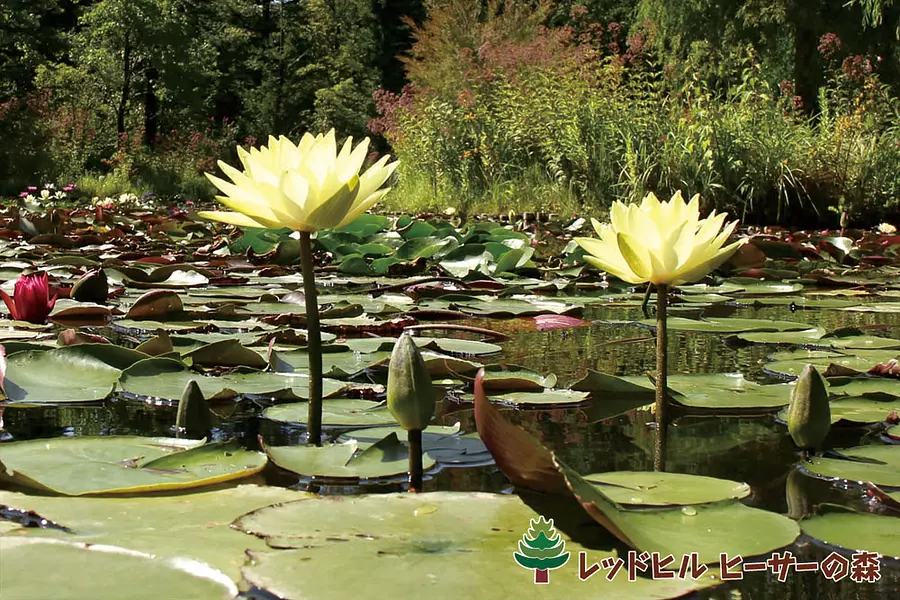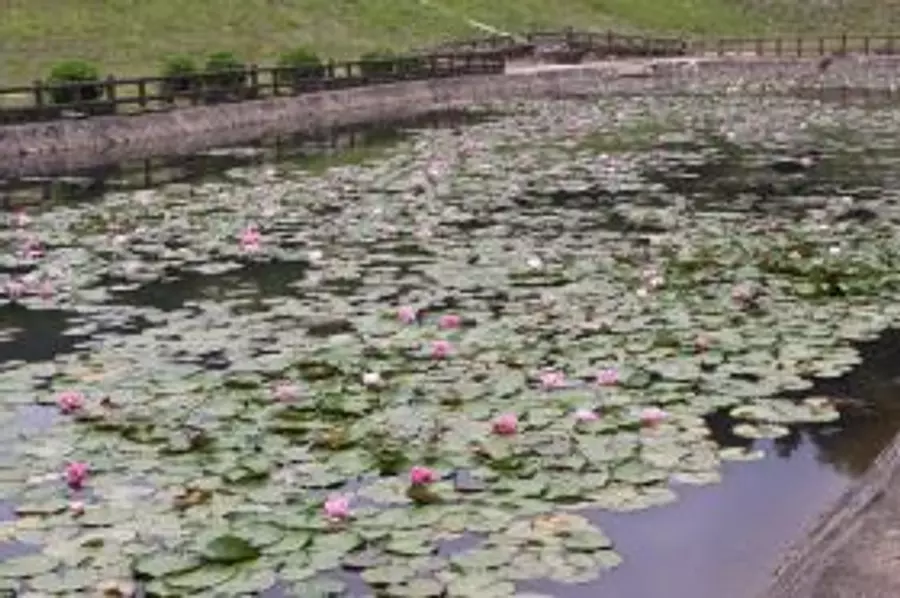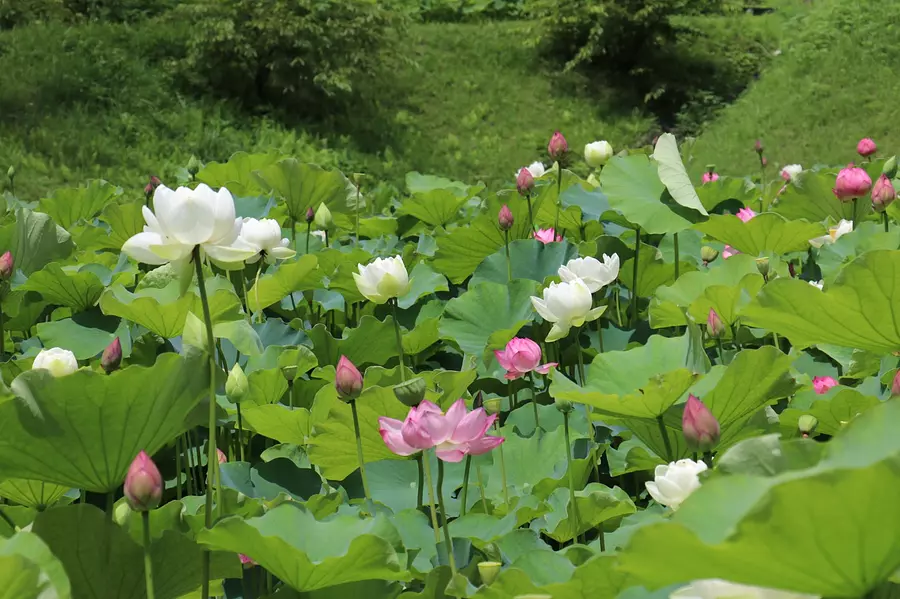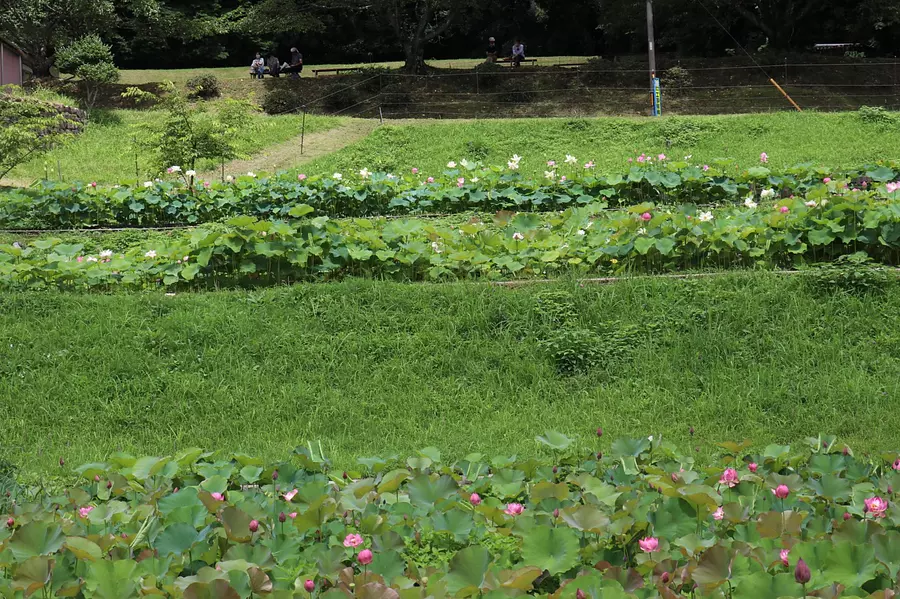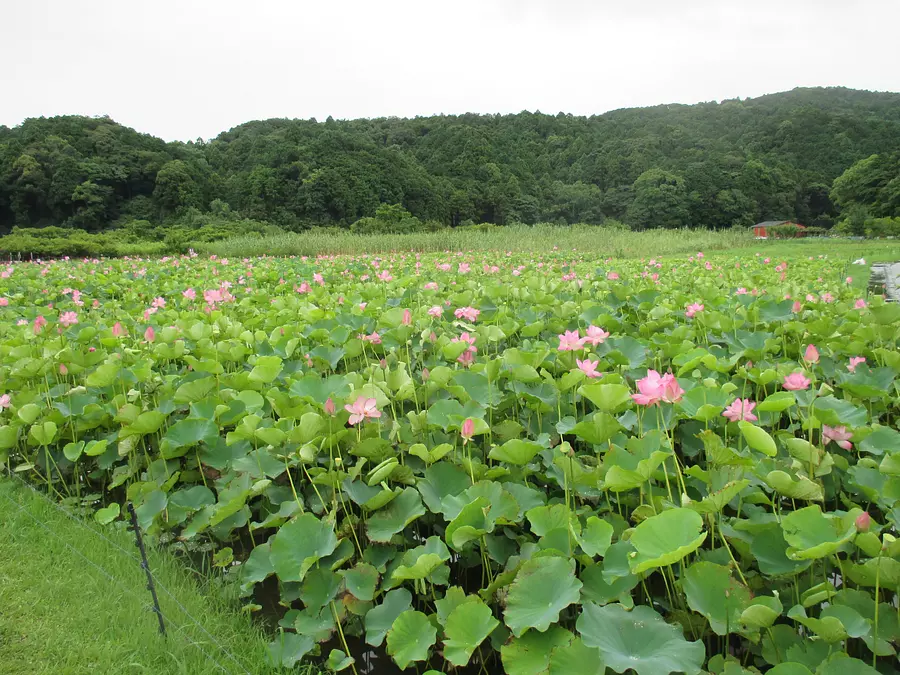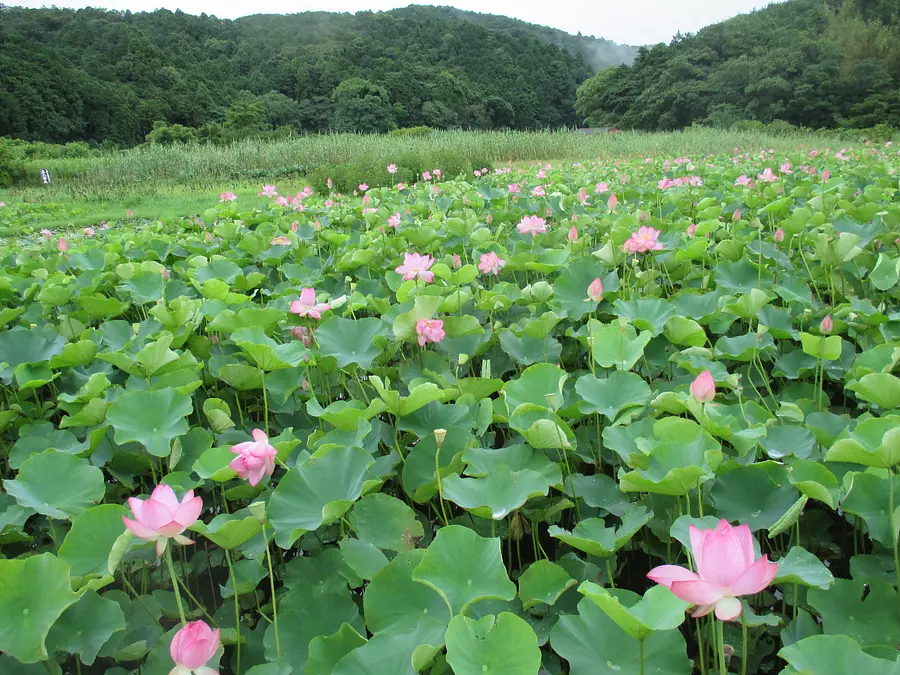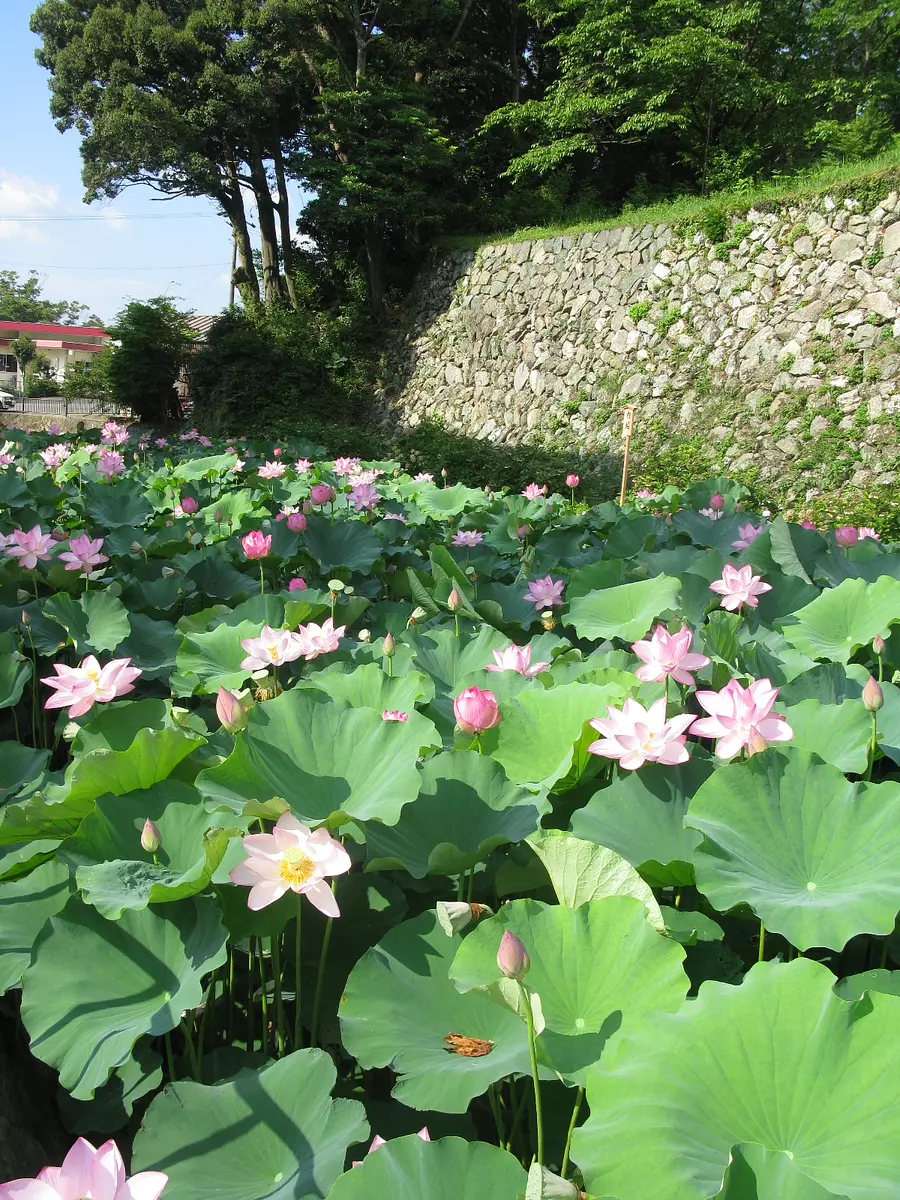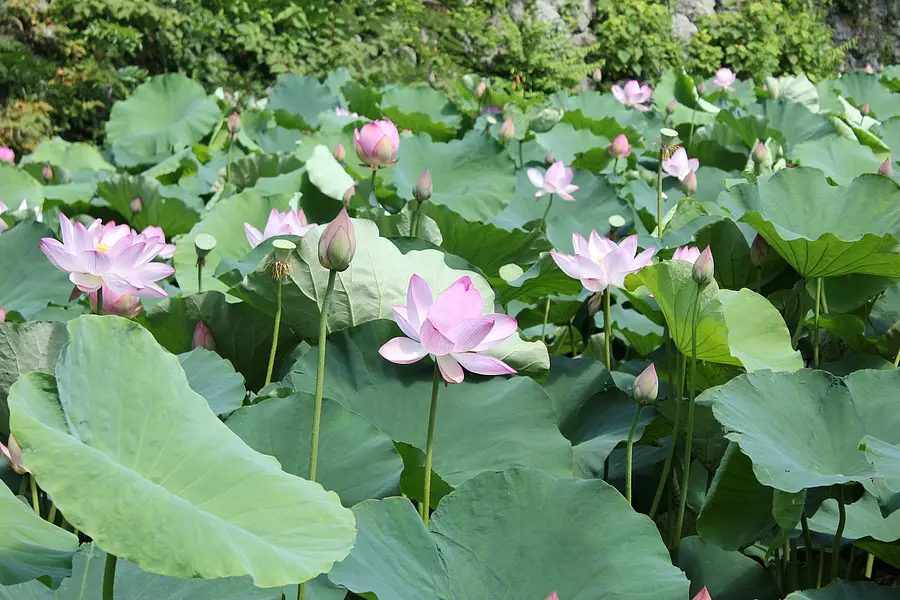Mie Prefecture's flowers, "Iris", "Hydrangea", "Lotus and Water Lily"
掲載日:2022.05.20

June is the season for Mie's prefectural flowers, ``flower iris'' and ``hydrangea.''
In addition to flower irises and hydrangeas, there are many flower spots that can be enjoyed during the rainy season, such as lotus flowers.
We will introduce some representative places in Mie Prefecture!
*The posted blooming period may differ depending on the weather, etc., so please check with each contact in advance.
index
Horikawa Iris Garden flower irises (YokkaichiCity)
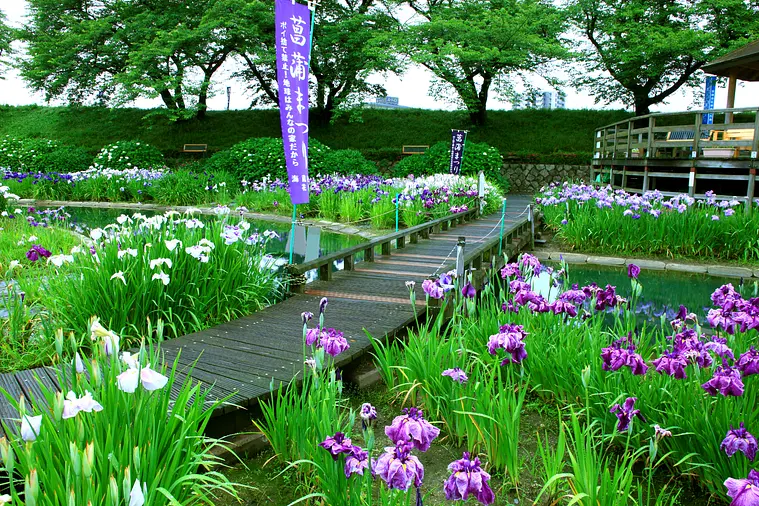
In addition to about 4,000 irises of 65 varieties, 100 hydrangeas are planted.
As you look at the colorful flowers from the wooden deck or walking path, the sound of the murmuring stream flowing through the park will be soothing to your ears.
You can see the colors even more vividly on rainy days as well as on sunny days.
Related information
Iris Festival Late May to early June *Scheduled
saikuu irises community (Meiwa Town, MeiwaTown)
The town flower of MeiwaTown, also known as "Dondo flower". Beautiful dark purple flowers bloom from late May to early June every year. It is rare to find them growing in large numbers on the plains, and it was designated as a national natural monument on December 16, 1936.
Related information
Late May to early June
Futami Shobu Roman Forest Flower Shobu (IseCity)
There is a promenade in the park, where you can spend a relaxing time while enjoying the scent of irises. There are aquatic plants in the stream (waterway) that runs along the side, and you can also see fireflies around late June.
In addition, the adjacent Folklore Station Somin sells locally grown vegetables and specialty products.
Related information
Blooming period: Late May Best time to see: Mid-June
Flowers of IseJingu [IseJingu Geku] (IseCity)
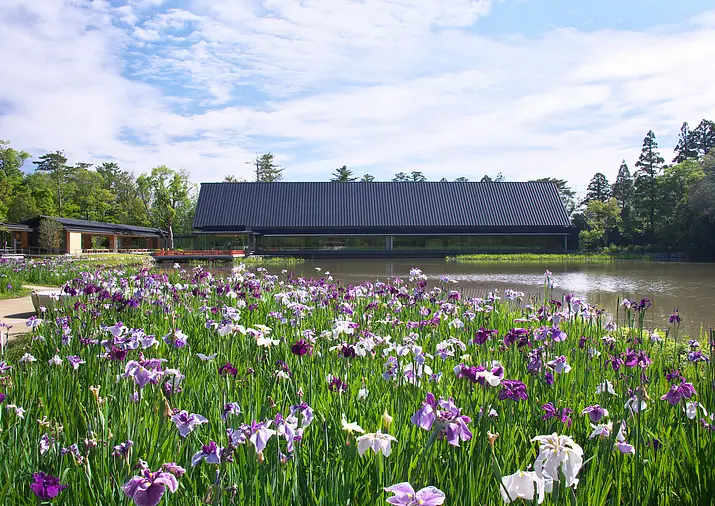
In early summer, 14,000 irises bloom beautifully, decorating the banks of Magatama Pond.
Related information
Late May to late June every year
Ise Iris Garden [Flowers] (TsuCity)
Our garden has been involved in the recovery of Ise-style flowers and irises after the war, albeit in a small way. During the flower blooming period in June, the garden is open to the public for free tours.
Related information
Every year from early June
Kameyama Park Iris Garden (KameyamaCity)
Kameyama Park was originally the villa of the feudal lord of Kameyama Castle, and at approximately 4,000 square meters, it boasts one of the largest flower gardens in the prefecture, and is home to approximately 20,000 flower irises of 100 different types. The Iris Festival is held in the early part of the year.
Hydrangeas at Manyo no Sato Park (InabeCity)
Of the 150 types of plants mentioned in the Manyoshu, 140 types of plants were transplanted to the park surrounding the civic center. The original song sung about the plant is displayed on a sign.
This place is also famous for its hydrangeas, with 5,000 hydrangeas in full bloom in mid-June.
Related information
Around mid-June
“Kazahaya no Sato” Hydrangea Festival (TsuCity)
5 minutes from Hisai IC, perfect for visiting Ise Shrine or visiting the Kumano Kodo, a world heritage site.
Please enjoy the ``healing flowerscape'' colored by hydrangeas, which you cannot see in everyday life. 75,000 hydrangeas of 39 varieties are planted on 33,000 square meters.
Due to the beauty of the planting that takes advantage of the hilly environment, it is said to be the most beautiful hydrangea garden in Japan, and can be enjoyed by the whole family, from children to the elderly, regardless of generation.
Related information
Usually from around the end of May
Hydrangea Festival Akatsuka Hydrangea Garden (TsuCity)
As the rainy season approaches, hydrangeas bloom with large, beautiful flowers.
At Akatsuka Botanical Garden, part of the production farm is open to the public as the "Hydrangea Garden" only during the hydrangea blooming season.
Inside the park, you can enjoy 1,000 hydrangeas of about 100 varieties, including popular gardening varieties such as Dance Party and Kaleidoscope that can only be found at a gardening specialty store, American hydrangeas such as white and pink Annabelle, pyramid hydrangeas with cone-shaped flowers, and mountain hydrangeas. can do.
Related information
Usually from early June
Hydrangeas at Matsusaka Agricultural Park BellFarm (MatsusakaCity)
Hydrangeas are in full bloom around June every year in the English garden and promenade within the park.
Hydrangeas at Taikoji Temple (IseCity)
Tae-ji Temple, located at the eastern foot of Mt. Otonashi, is an old temple of the Shingon sect founded by Gyoki. It is famous as a temple of flowers, with wisteria in May and hydrangeas in June. Some of the hydrangeas at Taeji Temple are nearly 100 years old, and many of the hydrangeas are mainly Gaku hydrangeas.
Related information
Mid-June to early July
MenardAoyamaResort Hydrangea Garden (IgaCity)
The colorful hydrangeas are in full bloom, vividly coloring the plateau during the rainy season.
Related information
Usually from early July
Daijiji Temple (Hydrangea Temple) (ShimaCity)
Shima Seven Lucky Gods Benzaiten and Hotei Son Sacred Site.
In June, the area around the temple is covered with hydrangea flowers, making it look as if there is a temple inside the hydrangeas, which is why it is nicknamed ``Hydrangea Temple.''
The actual name of this temple is ``Houzan Daijiji'' and it is a temple of the Myoshinji sect of the Rinzai sect.
Hydrangeas at Mirokuji Temple (NabariCity)
Although it is a small temple, it houses many old Buddhist statues that have been designated as national and prefectural important cultural properties.
The hydrangeas are spectacular from mid-June to mid-July.
Hydrangeas of Daishi no Sato (Taki Town, TakiTown)
As part of ``Hometown Water and Soil Conservation Activities'' and ``Regional Water Function Improvement Activities,'' local residents (volunteers) and the improvement district cooperated to ``Let's make hydrangeas bloom throughout the village, and along the Tateume Irrigation Canal (approximately 20km).'' ``Let's plant hydrangeas and create a unique landscape.'' The ``Hydrangea Full Campaign'' is being held for this purpose. More than 10,000 hydrangeas have been planted.
Hydrangeas and lotuses in Anamushi-no-sato (KameyamaCity)
This is a park created by local residents (Rokumarukai) in Henpoji Temple in the northern part of KameyamaCity. The origin of ``Anamushi'' is from the character name ``Anamushi'' that appeared in the village of Henpoji during the Meiji period. You can enjoy colorful flowers such as hydrangeas and lotuses in the park.
Takada Honzan Lotus (TsuCity)
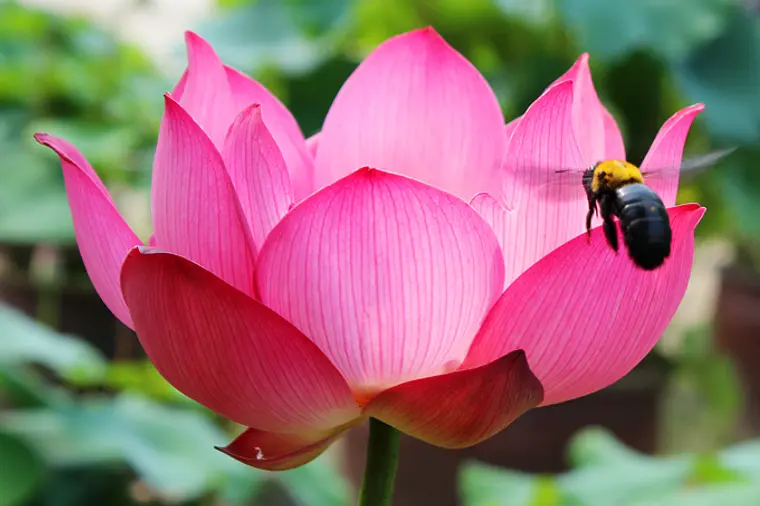
The symbol of Takada Honzan Senshuji is the lotus.
SENJUJIHeadTempleoftheShinshuTakadaSchool has a lotus pond and about 135 lotus pots, and you can enjoy various kinds of lotuses within the grounds.
Types of lotus: Approximately 35 types
We are also looking for lotus owners.
Related information
Late June to mid-August
Lotus flowers bloom in the morning and close in the afternoon, so the best time to see them is in the morning.
Oga lotus at MatsusakaCity Chubudai Sports Park (MatsusakaCity)
You can enjoy the Oga lotus blooming in the bottomless swamp of MatsusakaCity Chubu Sports Park from mid-July to mid-August. There is a loop path that goes around the park on top of the embankment, and you can see the lotus blooming all over the pond. Oga lotus is a lotus (ancient lotus) that sprouted and bloomed from ancient lotus seeds.
Water lilies at Matsusaka Agricultural Park BellFarm (MatsusakaCity)
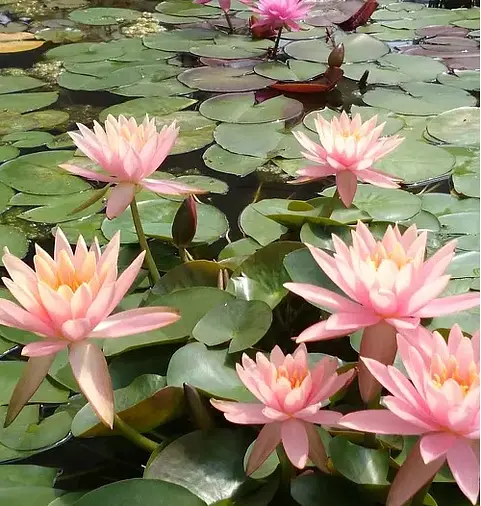
Temperate water lilies and tropical water lilies can be enjoyed in the glass house in the English garden.
The flowers close in the evening, so we recommend coming in the morning.
Related information
Mid-May to end of October
Red Hill Heather Forest Water Lily (TsuCity)
From mid-June to the end of October every year, water lilies are at their peak in Red Hill Heather Forest, a woodland in the Akatsuka Botanical Garden. Temperate water lilies decorate the water surface from June to August, and tropical water lilies decorate the water from July to October. .
Related information
Water lily at KongoshojiTemple (IseCity)
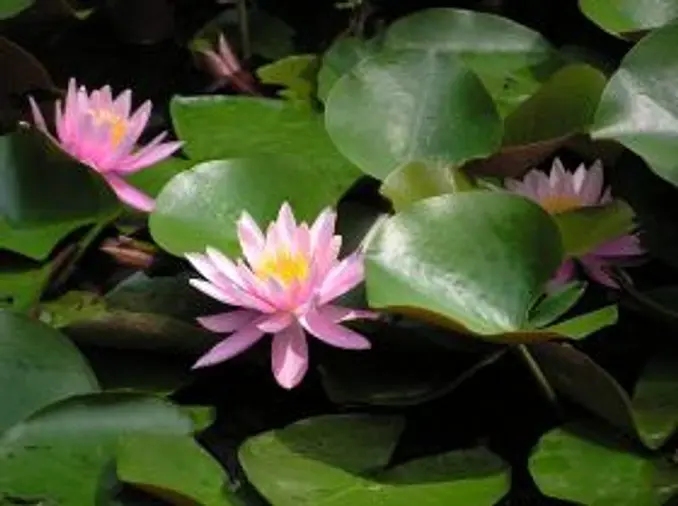
The Tsurema Pond, which is said to have been dug by Kobo Daishi, is the place that separates the sacred world from the secular world. The season when hundreds of water lilies bloom creates a magical atmosphere.
MihamaTown Teratani General Park (Mihama Town, MihamaTown)
A general park located almost in the center of town, with a playing field and tennis courts. There is a promenade along the ridge of the park, and the view of the Pacific Ocean and Kishu mountains from the observation deck is spectacular.
In addition, water lilies are planted in the scenic pond in the park, and from May to early September, beautiful water lily flowers bloom all over the pond, delighting visitors.
Lotus TsuCity Hakusan-cho, Tsu City (TsuCity)
The lotus flowers planted in 6,880 square meters of rice terraces in Futamata, Hakusan-cho, TsuCity are in full bloom from late June to early July.
Using fallow fields, TsuCity Hakusan Beautification Promotion Committee, made up of local residents, takes the lead in managing water and cutting grass.
Lotus flower (Futami Shobu Roman Forest) (IseCity)
Approximately 30,000 lotus plants grow in the Futami Shobu Roman Forest, which is located next to Folklore Station Somin.
Lotus flowers start blooming in late June, and the best time to see them is mid-July.
Oga Ren (TamakiTown Hall Yokouchi Moat) (Tamaki Town, TamakiTown)
Oga lotus (lotus) is a lotus that blooms during the Jomon period, when the late Dr. Ichiro Oga (then professor at Kanto Gakuin University), who was known as the lotus doctor, studied at the Kemigawa Kosei Farm, Faculty of Agriculture, University of Tokyo in Chiba City in 1951. It is said that he discovered three ancient lotus seeds and succeeded in flowering one of them.
Related information
Late June to early August


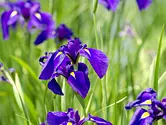
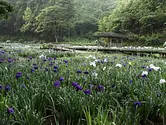
![Flowers of IseJingu [IseJingu Geku]](https://www.kankomie.or.jp/rails/active_storage/representations/proxy/eyJfcmFpbHMiOnsibWVzc2FnZSI6IkJBaHBBbXJUIiwiZXhwIjpudWxsLCJwdXIiOiJibG9iX2lkIn19--49fe691a7dd31affac96d83cd3438213452377f3/eyJfcmFpbHMiOnsibWVzc2FnZSI6IkJBaDdCem9MWm05eWJXRjBPZ2wzWldKd09oSnlaWE5wZW1WZmRHOWZabWwwV3dkcEFhWXciLCJleHAiOm51bGwsInB1ciI6InZhcmlhdGlvbiJ9fQ==--eb90280ff6a4fc8dcd70892674b7dec5a7ad4845/1194_1_org.jpg)
![Ise Iris Garden [Flowers]](https://www.kankomie.or.jp/rails/active_storage/representations/proxy/eyJfcmFpbHMiOnsibWVzc2FnZSI6IkJBaHBBcFhyIiwiZXhwIjpudWxsLCJwdXIiOiJibG9iX2lkIn19--403d310c99302c1fd59442381b3c0dc826cac245/eyJfcmFpbHMiOnsibWVzc2FnZSI6IkJBaDdCem9MWm05eWJXRjBPZ2wzWldKd09oSnlaWE5wZW1WZmRHOWZabWwwV3dkcEFhWXciLCJleHAiOm51bGwsInB1ciI6InZhcmlhdGlvbiJ9fQ==--eb90280ff6a4fc8dcd70892674b7dec5a7ad4845/4472_1_org.jpg)
